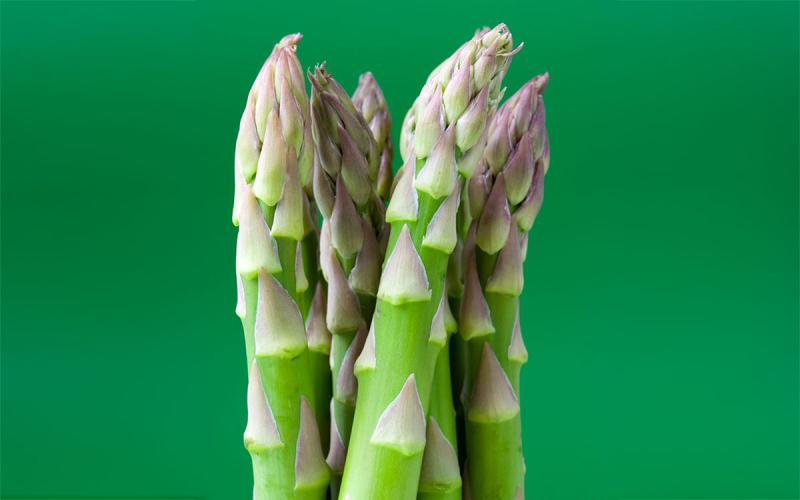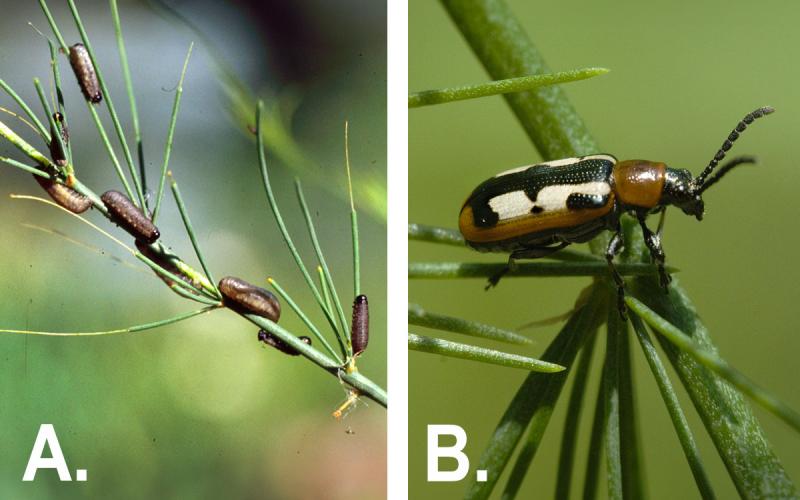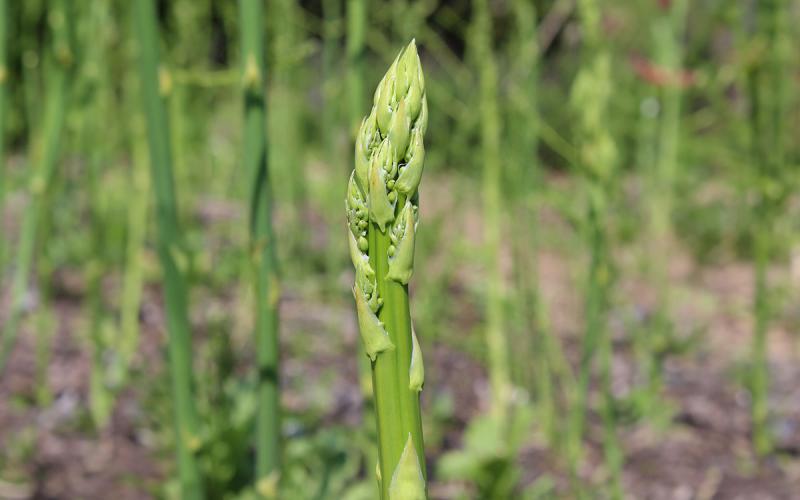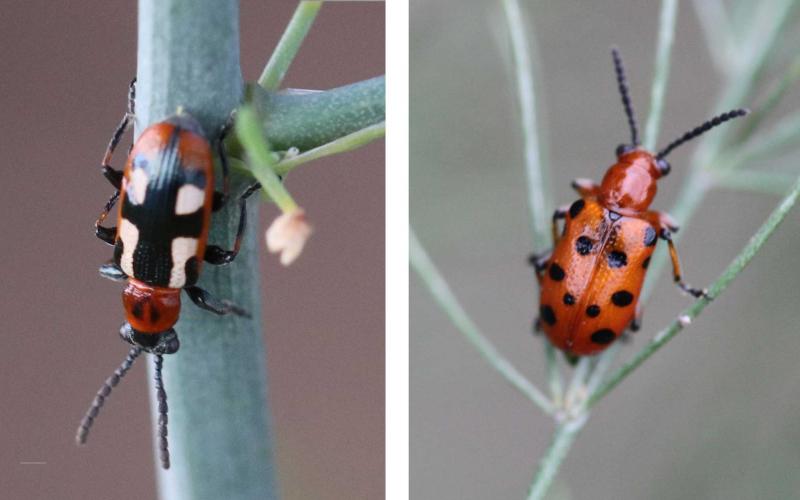Written by Rhoda Burrows, former Professor & SDSU Extension Horticulture Specialist.
Description

General Description: One of the joys of spring is fresh asparagus. With a little attention, this perennial can flourish in your garden. However, patience is required because the plants need two years to establish before you can harvest the first spears! Asparagus spears grow from buds on the underground crown of the plant, which can expand to be a foot or more across. Harvest is in the spring to early summer; after that the spears should be allowed to grow into ferns, which replenish the plant’s energy for the following year.
Varieties: “Millenium” is an all-male hybrid that is both cold-hardy and tolerant of our heavier clay soils, although it may be more prone to rust disease. “Jersey Giant” is another all-male hybrid with good yield and rust resistance. Older varieties often available at retail outlets, such as “Mary Washington” have both female and male plants, and the females will produce berries that can spread asparagus seedlings in unwanted areas. There are also some purple varieties, which will turn green when cooked.
Planting

When/Where to Plant: Asparagus can be planted mid-April through June (Figure 1). Asparagus roots can grow six feet deep, so choose a spot in your yard where it can stay permanently. It will need full sun for eight hours a day and well-drained soil. Avoid low spots where frost may accumulate in the spring, as well as rocky ground that may damage spears as they grow through the soil. Also avoid areas with difficult to control weeds, such as thistles.
Site Preparation: Asparagus is most often grown from one-year-old crowns, although the adventurous may grow transplants from seed (a process that takes an extra year before harvesting spears). Apply manure or compost to the planting area, preferably the fall before planting.

Begin by digging a trench for the asparagus that's about 6 to 8 inches deep; position the crowns 12 to 18 inches apart, upright, with the roots spreading in the bottom of the trench (Figure 2). After that, cover them with about two inches of soil.
As new shoots grow, gradually add soil over the plants (a couple of inches every few weeks) so that the trench is filled by the end of the season. As you are filling the trench, be careful not to bury the ferns!
Plant Care
Watering: Although asparagus is fairly drought-tolerant once established, it will need watering for optimal fern and spear growth. Soak the soil deeply, and then let the surface inch or two dry before watering again. Using soaker hoses or drip irrigation can help decrease leaf diseases.
Weeding: Perennial weeds are very difficult to control in an asparagus planting; if possible, they should be eliminated before you begin planting. A very shallow hoeing (no more than 2 inches deep) can be done in early spring as soon as the ground thaws. A three-to-four-inch-deep layer of mulch can also be applied to help reduce weeds in asparagus plantings.
Fertilizer: Applying nitrogen each year will help to keep your asparagus healthy and yielding well. It can be applied each year after the last harvest (typically in early summer). If using a high-nitrogen lawn fertilizer (such as 35-0-0), apply about ½ cup per a 10-foot row of asparagus; it's also very important to check the fertilizer label to make sure that it does not contain an herbicide. Other good nitrogen sources include fish emulsion, feather meal, alfalfa meal, or blood meal.
Pests, Diseases, and Minor Problems

Pests and Diseases
- Asparagus Beetles: The beetles feed on foliage and can harm young plants (Figure 3); in high numbers they can inject a toxin that kills the foliage or wilts the plant. They often congregate under lower leaves that are touching the ground. For pest control methods, see our Asparagus Beetle article and Growing Asparagus publication.
- Rust: Orange spots will appear on ferns and stems. Remove the ferns in the fall or early spring, and use resistant varieties, such as the Jersey hybrids.
Minor Problems
- Crooked Spears: Rocky ground, insect damage, or even wind-blown debris can injure one side of a spear and cause it to grow crooked. They will still be good to eat!
- Feathering: Bracts of the spears are partly spread as a result of high temperatures (Figure 4). Feathered spears become stringy and tough.

Harvest, Storage and Preparation
Harvest: Harvest asparagus by snapping the spears off at ground level or slightly above when they are 6 to 10 inches tall. Spears can be harvested for a period of two-to-four weeks the third year after planting, if they are of good diameter. If spindly, let the spears grow into ferns to keep feeding the crown. During cool spring days, harvest the spears when they are fairly short (6 inches) as they are growing more slowly and will be more fibrous if left to elongate further. Otherwise, harvest spears any time before the head loosens up.
Cooking: Spears may be steamed, boiled, grilled or roasted. Cook until just barely tender. For more ideas, see our Pick it! Try it! Like it! resource for asparagus.
Preservation: Asparagus can be preserved by freezing, canning, and dehydration processes. For more information, check out our Pick it, Try it, Like it for Food Preservation resource for asparagus.
Nutrition Facts: An asparagus spear has fewer than five calories and is a good source of Folate and Vitamins A, C, and K.

